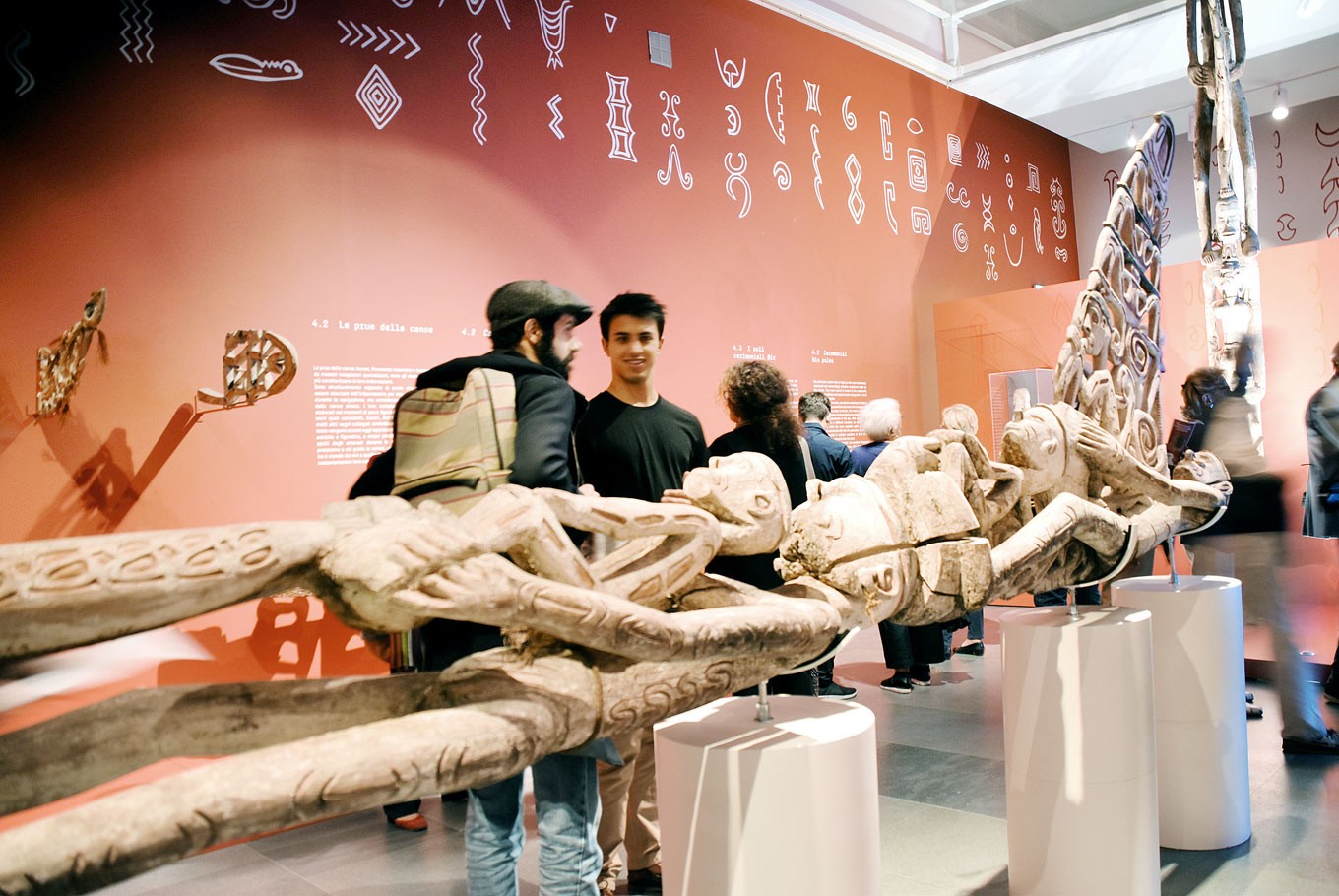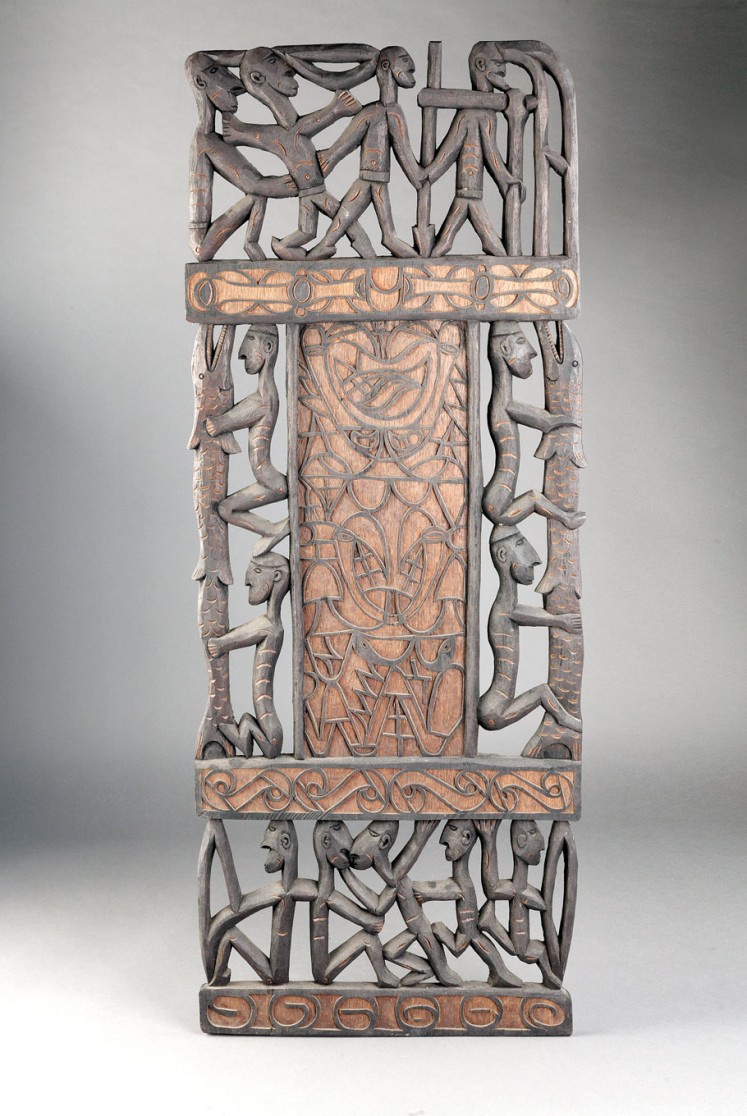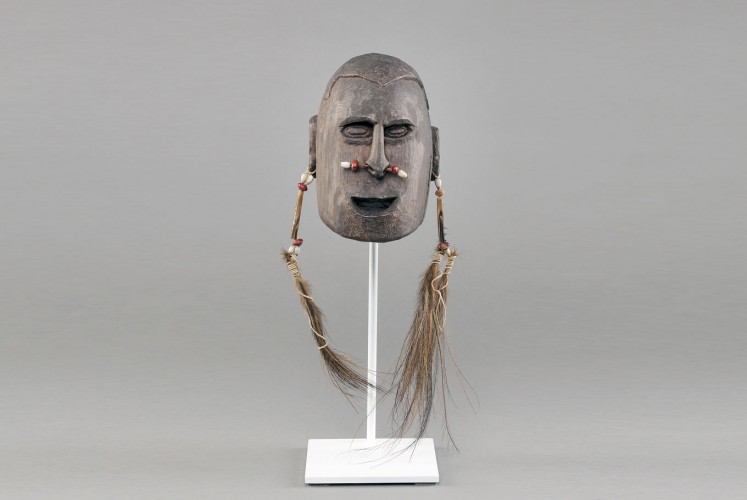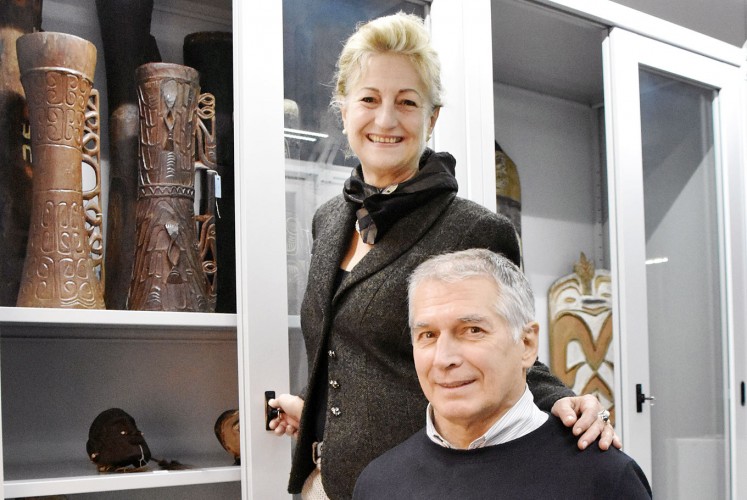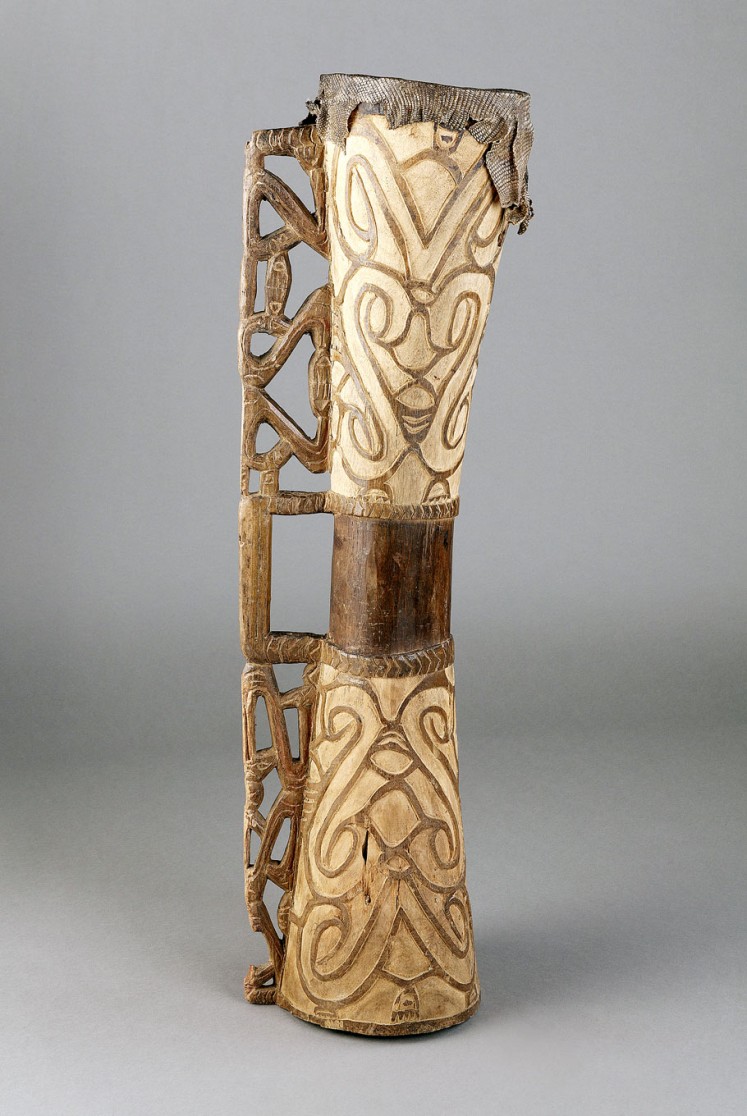Popular Reads
Top Results
Can't find what you're looking for?
View all search resultsPopular Reads
Top Results
Can't find what you're looking for?
View all search resultsExposition of Asmat culture to Italian public
An exhibition bringing Asmat people closer to the hearts of Italians.
Change text size
Gift Premium Articles
to Anyone
A
glass box containing a wooden sculpture of a human head welcomes visitors of Museo delle Culture (MUDEC/Museum of Culture) in Milan, Italy, while a wall dominated by red presents an illustration of Papua Island.
Through an opening corridor, in a room painted white, various artifacts connected with Papuan people’s daily activities were on display, such as hunting, cooking, farming, war, ritual and decorative equipment, including spears, daggers, shields, body accessories, bags and wall panels.
“The exhibits can give visitors an insight into the aspects related to the daily routines of this ethnic group and the complex tradition observed by the community,” Giorgia Barzetti, the museum curator, said.
Asmat carvings (MUDEC/File)
smat means people on earth, and the locals call themselves Asmat-Ow to distinguish themselves from spirits.
“In the first collection, we wish to show the aspects of life of the Asmat tribe covering hunting, fishing and sago processing into starch as their main staple food. In the second we display the tools and articles used daily, from the implements for starch-making to accessories for decorating the body such as skirts, head gear, handbags, waistbands, bracelets, necklaces and nose ornaments,” he added.
The second collection also includes original war and ritual equipment, including daggers, arrows and spears along with typical shields.
“The weapons used by Asmat people aren’t just for the practical purposes of hunting and overcoming conflicts with other tribes, but also for rituals and sacred ceremonies, especially when carrying out head hunting,” Barzetti said.
“Legends and old literature indicate that in a tribal war, head hunting was practiced as a very important part of their cultural and spiritual life. The killing was seen to be direly needed because it determines the group’s continuity and welfare having to do with the initiation and transition rite of a young man into adulthood. This also concerns cannibalism, in which the consumption of an enemy’s flesh is believed to transmit the victim’s vital force to the triumphant fighter to gain prestige, power and social status,” Giorgia explained.
However, the “harsh side” of the ethnic group turns into a spectacle of beauty as visitors enter the next room. Red dominates again, with two totems depicting men in a mutual support position, each more than 4 meters high, one in the middle and the other at the end of the room, one vertically erected and the other horizontally laid.
There are also several sculptures in the form of boats complete with rowers. On the right of the room are musical instruments, drums made from wood and animal hide with carvings symbolizing spirits.
Tribal life: The wooden head statue symbolizes the Asmat people’s old head hunting tradition. (MUDEC/File)“Rather than just engaged in hunting, the Asmats also have their expression of divine veneration as obviously reflected in their works. Their art constitutes a profound combination and total balance between human activities and spiritual rites, as evident in the over 4-meter totems depicting the attempts of Asmat members to remain balanced and mutually sustaining in social life and in the ritual worshipping divine spirits,” Barzetti said.
Asmat myth maintains that men were first born out of wood carved by the tribe founder, Fumeripitsj, who decided to carve several human figures from wood. He later crafted drums from tree trunks and lizard skin. Drum music seemingly infused soul into the figures, causing them to start dancing. This process is believed to have been the way the Asmat people came into being.
With the Fumeripitsj myth, the Asmat tradition has two basic aspects, statues and music. In this room, poles, sculptures, boats, horns, drums, and masks for the funeral ritual reflect the features and characteristics of Asmat culture.
A married couple, Mariangela Fardella and Giorgio Azzaroli, along with three collectors, Maurizio Leigheb, Roberto Fiore and Hans Jansen, take great pride that through their assiduity and love of the Asmat works, they were capable of organizing an exposition entitled Eravamo Cacciatori di Teste (We Were Head Hunters), at MUDEC, which opened on Sept. 26, 2017 and will run until July 8, 2018.
Mariangela Fardella and Giorgio Azzaroli (JP/Rieska Wulandari)“I highly admire the Asmat people’s principle of social and spiritual relationship. I have deep affection for their originality in living their life and for all their works. This exposition serves as our testimony to reveal our love of this ethnic group and we hope they won’t cease to be immersed in their creative preoccupation,” Mariangela said.
Cesare Galli, 60, an Italian photographer living in Novara city, at the opening function described the great importance of this exhibition and expressed his pride and pleasure to witness the display of Indonesian carvings in Milan.
“I love Indonesia. I love its people and culture. I frequently visit this country. Seeing the collections here heals my longing for Indonesia,” he said with a smile.
An Indonesian government representative, Agung FR, Director of the Indonesian Trade Promotion Center (ITPC) in Milan, expressed his appreciation and gratitude for the arduous efforts of the collectors to present the cultural features of Indonesia in Italy.
Andi Sri Wahyuni Mandasini, an Indonesian who has lived in Italy for a decade, said it was the first time she had attended an exhibition of Asmat culture with such clarity and detail.
“I’m moved and at the same time ashamed, as some foreign citizens are so concerned and working hard to expose the culture of our community, and we even get acquainted through them. It’s a good lesson for us Indonesians,” she said.
Exotic: Tambur percussion instrument made of wood and reptile skin. (MUDEC/File)
